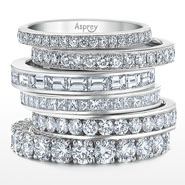- About
- Subscribe Now
- New York,
February 14, 2012

Even in the face of an unstable economy, consumers are increasingly shopping for full-priced luxury online rather than flash sale items, according to new research from American Express Business Insights.
Flash sales saw an increase in sales of 21 percent during 2011, falling behind full-priced online luxury Web sites that saw a sales increase of 25 percent year over year. Additionally, the study found that Generation Y consumers are starting to have a serious effect on the luxury industry.
“Based on actual aggregated spending data, we saw evidence that, after remarkable growth in past years, spending in online discount is flattening while full-priced online luxury seems to have benefited from the flash sales that sparked consumers’ luxury appetite,” said Ed Jay, senior vice president at American Express Business Insights, New York.
“During the recession, consumers had to be mindful of fashion spending and took advantage of online discount luxury outlets such as flash-sale Web sites,” he said.“These sites also made luxury brands accessible to a large consumer base, given the much lower price point.
“Now post-recession, with a bit more disposable income, consumers are willing to pay full-price for the luxury brands they have grown to love.”
The new findings from American Express Business Insights, which include analyses of in-store and online spending at premium and discount luxury merchants across a range of consumer demographics, are based on actual, aggregated spending data from 2009 through 2011.
A taste is all it takes
American Express Business Insights has seen that online flash sales are slowing down. However, the trend is not carrying over to online luxury retail as a whole.
For example, in 2010, flash sales saw a jump of 92 percent in spending over the year prior by average spenders.
However, this declined to only a 21 percent increase in 2011.
Meanwhile, the growth rate was higher for full-priced online luxury Web sites.
Full-priced luxury ecommerce sites saw an increase of 20 percent year over year by average spenders in 2010 and a 25 percent for 2011.
Average spenders are those consumers who are not in the top 10 percent of total spenders.
American Express Business Insights refers to the top 10 percent as the “top spenders.”
Meanwhile, top spenders increased spending on flash-sale sites by 5 percent in 2011.
However, these consumers also increased full-price online sales by 17 percent that same year.
A greater number of consumers have acquired a taste for luxury fashion in recent years through the proliferation of flash sale Web sites and full-priced online luxury retailers are now reaping the benefits, according to American Express Business Insights.
Growing up
American Express Business Insights also found that seniors are more actively taking part in online spending than in previous years.
In fact, seniors now dominate the spend growth on flash-sale Web sites, outpacing growth by all other demographics, according to the findings.
Additionally, the spending increase amongst seniors is not translating to in-store sales data. These consumers seem to have stopped shopping in-store, relying more on ecommerce for retail shopping.
Generation Y consumers, those born after 1982, have normally comprised the smallest market for luxury goods. But new findings suggest this may be shifting.
For example, Gen Y consumers increased spend on premium luxury fashion by 33 percent in 2011 over the prior year.
Indeed, while this is currently still the smallest group of luxury consumers, Gen Y spending on full-priced online luxury retail grew more than any other demographic.
Gen Y spending on luxury retail increased 31 in 2011, compared to Generation X at 23 percent, baby boomers at 19 percent and seniors at 6 percent from 2010 to 2011.
Therefore, luxury marketers would be smart to focus on reaching Gen Y consumers.
“Gen Y continues to be an interesting group to watch,” Mr. Jay said. “Although this is the smallest group and only makes up 3 percent of overall luxury spending, Gen Y increased spend on premium luxury fashion in 2011 over the year prior, and is gaining share at the expense of [baby] boomers and seniors.
“Unlike older generations, Gen Y is less brand loyal and willing to experiment with luxury brands, providing an excellent opportunity for luxury marketers,” he said.
“Many luxury brands traditionally think of boomers as their core customers and while this group does contribute a noteworthy 48 percent of luxury spending, the younger generations are picking up pace.”
Final Take
Kayla Hutzler, editorial assistant on Luxury Daily, New York
Share your thoughts. Click here